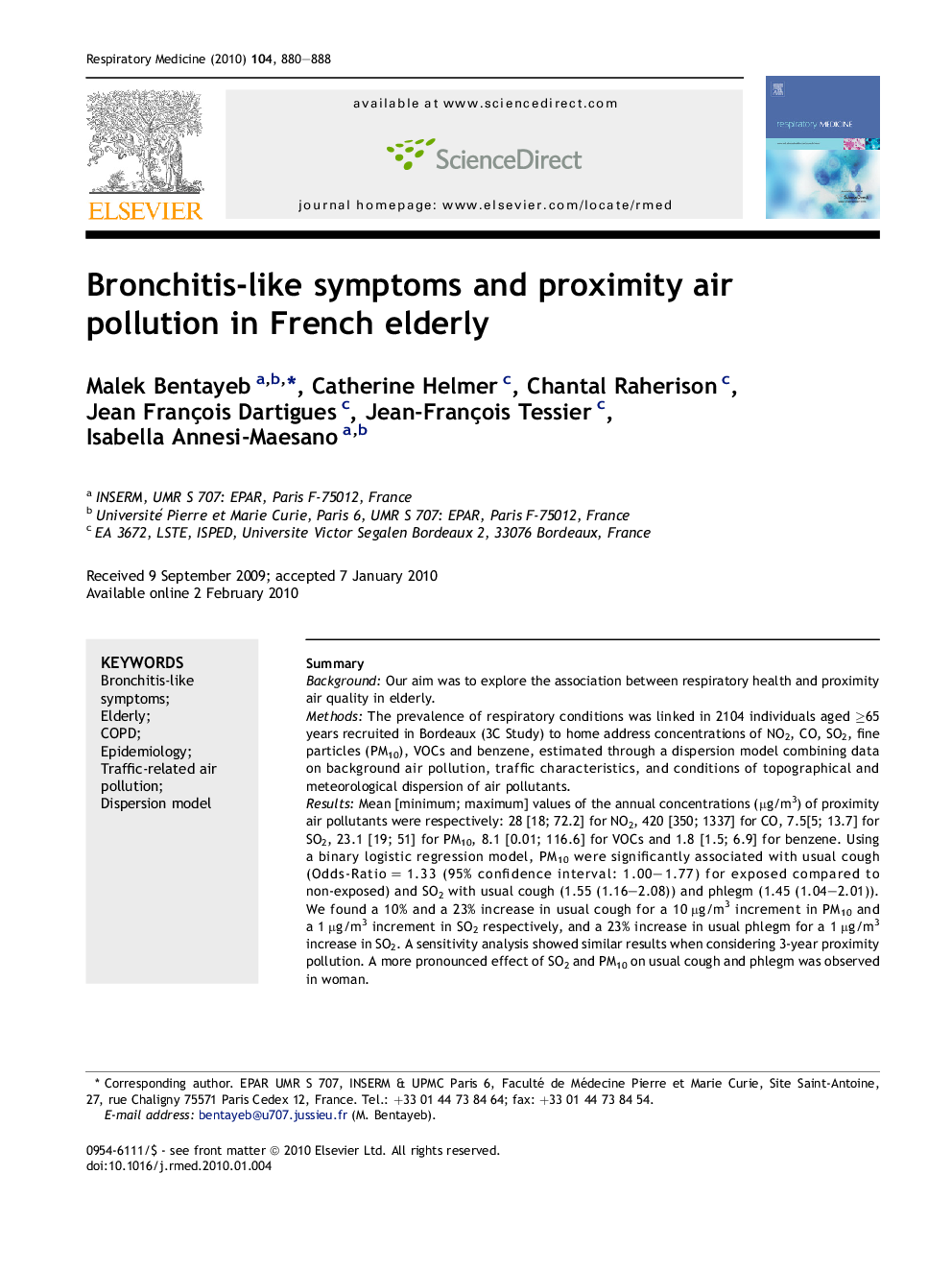| Article ID | Journal | Published Year | Pages | File Type |
|---|---|---|---|---|
| 4210567 | Respiratory Medicine | 2010 | 9 Pages |
SummaryBackgroundOur aim was to explore the association between respiratory health and proximity air quality in elderly.MethodsThe prevalence of respiratory conditions was linked in 2104 individuals aged ≥65 years recruited in Bordeaux (3C Study) to home address concentrations of NO2, CO, SO2, fine particles (PM10), VOCs and benzene, estimated through a dispersion model combining data on background air pollution, traffic characteristics, and conditions of topographical and meteorological dispersion of air pollutants.ResultsMean [minimum; maximum] values of the annual concentrations (μg/m3) of proximity air pollutants were respectively: 28 [18; 72.2] for NO2, 420 [350; 1337] for CO, 7.5[5; 13.7] for SO2, 23.1 [19; 51] for PM10, 8.1 [0.01; 116.6] for VOCs and 1.8 [1.5; 6.9] for benzene. Using a binary logistic regression model, PM10 were significantly associated with usual cough (Odds-Ratio = 1.33 (95% confidence interval: 1.00–1.77) for exposed compared to non-exposed) and SO2 with usual cough (1.55 (1.16–2.08)) and phlegm (1.45 (1.04–2.01)). We found a 10% and a 23% increase in usual cough for a 10 μg/m3 increment in PM10 and a 1 μg/m3 increment in SO2 respectively, and a 23% increase in usual phlegm for a 1 μg/m3 increase in SO2. A sensitivity analysis showed similar results when considering 3-year proximity pollution. A more pronounced effect of SO2 and PM10 on usual cough and phlegm was observed in woman.ConclusionsOur assessment of exposure to proximity air pollution has shown an increased prevalence of bronchitis-like symptoms in elderly living in areas polluted by SO2 and PM10.
